1-Wire扩展网络标准
引言
本文引用地址:https://www.eepw.com.cn/article/258911.htm1-Wire总线是一种简单的信令协议,可通过单根电气连接进行双向通信。在1-Wire系统中,单个主机与一个或多个从器件通过一条公共数据线实现互联。Dallas Semiconductor公司于1989年制定了1-Wire标准,减少了便携数据传输模块间的连接。iButton® (16mm电池形状的模块)随之应运而生,目前全球销售量超过1.3亿。
1-Wire架构也适用于其它应用,如芯片标签和远距离传感器。然而,早期的1-Wire前端没有考虑到这些新型应用的噪声水平与线路特性(如线长)。若要满足这些新型应用的要求,经常需要考虑在实际应用中如何配置1-Wire网络。因此,为了满足这一系列应用的要求,Dallas开发了1-Wire扩展网络标准的新型1-Wire前端,并将其植入一些新产品中。表1列出了1-Wire器件清单,并给出了新型扩展标准支持的器件。
新型扩展标准的重要特性
各种噪声源所产生的噪声将导致1-Wire线路上出现信号毛刺。这些噪声可能来自网络端点或分支点的反射。噪声也可能由外部源产生,并耦合到1-Wire信号上。上升沿的噪声毛刺会导致1-Wire器件与主机失去同步。改进后的扩展网络前端可以解决上升沿存在的这一问题。
新型1-Wire前端主要包括三个部分:用于滤除高频噪声的低通滤波器、低电平切换至高电平时的电压滞回电路,以及上升沿延时电路。某些1-Wire器件还具有在线应答脉冲摆率控制电路。图1给出了这一系列特性的示意图。粉红色阴影部分表示1-Wire电压由低电平至高电平转换期间,器件忽略电压幅值的毛刺和瞬时毛刺。

图1. 新型1-Wire前端的特性
表1. 1-Wire器件
Device | FC | Description | 1-Wire Extended Network Support |
DS1425 | 02 | Multikey iButton, 1152-bit secure memory | |
DS1427 | 04 | 4k NV RAM memory and clock, timer, alarms | |
DS1820 | 10 | Temperature and alarm trips | |
DS1822 | 22 | 1-Wire Econo temp sensor | |
DS1825 | 3B | 1-Wire thermometer with 4-bit address | |
DS18B20 | 28 | Adjustable resolution temperature | |
DS18S20 | 10 | Temperature and alarm trips | |
DS1982 | 09 | 1k EPROM memory | |
DS1985 | 0B | 16k EPROM memory | |
DS1986 | 0F | 64k EPROM memory | |
DS1904 | 24 | Real-Time Clock (RTC) iButton | |
DS1920 | 10 | Temperature and alarm trips | |
DS1921G | 21 | Thermochron temperature logger | |
DS1922L | 41 | High-Capacity Thermochron and/or Hygrochron. temperature and/or humidity dataloggers, respectively |
|
DS1961S | 33 | 1k EEPROM memory with SHA-1 engine | |
DS1963L | 1A | 4k NV RAM memory with write cycle counters | |
DS1963S | 18 | 4K NVRAM memory and SHA-1 engine | |
DS1971 | 14 | 256-bit EEPROM memory and 64-bit OTP register | |
DS1972 | 2D | 1k EEPROM memory | |
DS1973 | 23 | 4k EEPROM memory |
|
DS1977 | 37 | Password-protected 32kB (bytes) EEPROM |
|
DS1990A | 01 | 1-Wire address only | |
DS1991 | 02 | Multikey iButton, 1152-bit secure memory | |
DS1992 | 08 | 1k NV RAM memory | |
DS1993 | 06 | 4k NV RAM memory | |
DS1994 | 04 | 4k NV RAM memory and clock, timer, alarms | |
DS1995 | 0A | 16k NV RAM memory | |
DS1996 | 0C | 64k NV RAM memory | |
DS2401 | 01 | 1-Wire address only | |
DS2405 | 05 | Single switch | |
DS2404 | 04 | 4k NV RAM memory and clock, timer, alarms | |
DS2406 | 12 | 1k EPROM memory, 2-channel addressable switch | |
DS2408 | 29 | 8-channel addressable switch |
|
DS2409 | 1F | Dual switch, coupler | |
DS2411 | 01 | Low-voltage, unique 64-bit serial ROM number (requires VDD connection) |
|
DS2413 | 3A | Dual-channel addressable switch |
|
DS2415 | 24 | RTC | |
DS2417 | 27 | RTC with interrupt | |
DS2422 | 41 | High-capacity Thermochron/Hygrochron (temperature and humidity) datalogger |
|
DS2423 | 1D | 4k NV RAM memory with external counters | |
DS2430A | 14 | 256-bit EEPROM memory and 64-bit OTP register | |
DS2431 | 2D | 1024-bit EEPROM memory |
|
DS2432 | 33 | 1k EEPROM memory with SHA-1 engine | |
DS2433 | 23 | 4k EEPROM memory | |
DS2436 | 1B | 1-Wire battery ID with temperature and voltage monitor | |
DS2438 | 26 | Temperature, ADC | |
DS2450 | 20 | Quad ADC | |
DS2502 | 09 | 1k EPROM memory | |
DS2505 | 0B | 16k EPROM memory | |
DS2506 | 0F | 64k EPROM memory | |
DS2720 | 31 | 1-Wire single-cell Lithium recharger with protection | |
DS2740 | 36 | 1-Wire coulomb counter (high precision) | |
DS2751 | 51 | 1-Wire fuel gauge for 1-cell Li+ or 3-cell NiMH | |
DS2760 | 30 | Temperature, current, ADC | |
DS2761 | 2B | 1-Wire Li+ monitor | |
DS2762 | 30 | 1-Wire battery monitor and protector | |
DS2770 | 2E | 1-Wire battery monitor and charge controller | |
DS2780 | 32 | Stand-alone 1-Wire fuel gauge | |
DS2890 | 2C | Single-channel digital potentiometer | |
DS28E04-100 | 1C | 4096-bit EEPROM memory, two-channel addressable switch |
|
注意:新的1-Wire器件将及时添加到产品线上。列表中可能没有列出最新的器件。请参考器件数据资料中的“改善的网络性能”(Improved Network Behavior)部分,确认此器件是否带有新型扩展网络前端。
扩展网络标准的新特性仅适用于标准速率通信,在高速模式下无效。1-Wire前端的新增特性将影响1-Wire时序参数。这里要特别指出,新标准引入了一个EC参数tREH,表示上升沿延时。这一延时特性延长了主机产生的读位的低电平时间tRL。参见表2。
通过长线实现与1-Wire器件通信的实际经验表明,位操作之间需具有足够的恢复时间。因此,所有扩展网络器件都具有较长的恢复时间tREC。所有器件(标准的和扩展网络的)的恢复时间都是针对1-Wire总线上只有一个器件的条件定义的。总线上挂接有多个器件时,如何确定扩展网络的恢复时间请参见应用笔记3829,确定多从机1-Wire网络的恢复时间。
内置在线应答脉冲摆率控制的器件还具有一个参数tFPD,表示在线应答检测下降沿时间。虽然控制摆率可以减小长线传输所产生的反射,但对于主机检测在线应答脉冲的窗口也将产生非常大的影响。1-Wire主机的阻抗匹配无需采用摆率延时,即能有效地控制这些反射。因此,以后推出的器件将不再采用在线应答脉冲摆率控制。
表2. EC表参数的区别
Parameter | Speed | Min/Max | Standard | Extended Network |
tREC | Standard | Min | 1 | 5 |
Overdrive | Min | 1 | 2 | |
tREC (before reset) | Overdrive | Min | 1 | 5 |
tREH | Standard | Min | — | 0.5 |
Standard | Max | — | 5 | |
Overdrive | Min | — | 0.5 | |
Overdrive | Max | — | 5 | |
tRL | Standard | Min | 1 | 5 |
结论
1-Wire主机能同时兼容于标准器件和扩展网络器件。使用扩展网络器件时,只需简单的延长位操作间的恢复时间以及读位启动脉冲时间tRL。采用较长的恢复时间将降低数据吞吐率,而改变读位启动脉冲时间则不会影响吞吐率。对于采用线应答脉冲摆率控制(tFPD)的器件所组成的网络,应仔细选择在线应答脉冲的采样点。使用不同的器件和电压,可能要限制其采样范围。




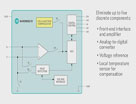
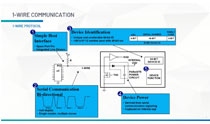



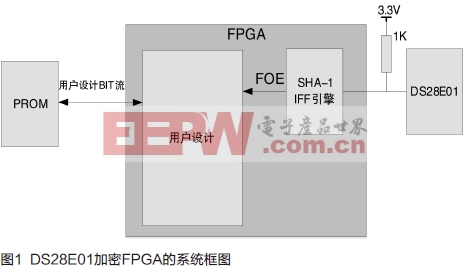
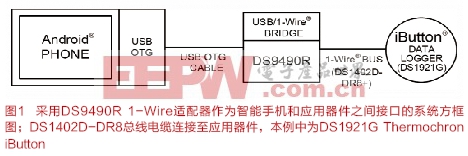
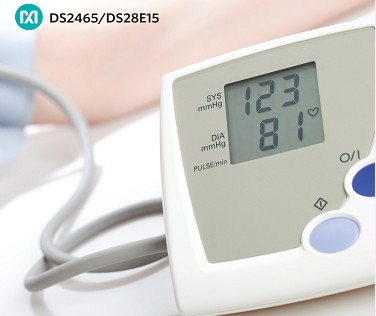
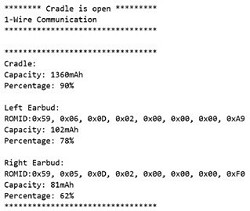
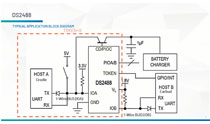

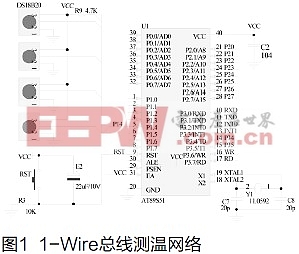
评论